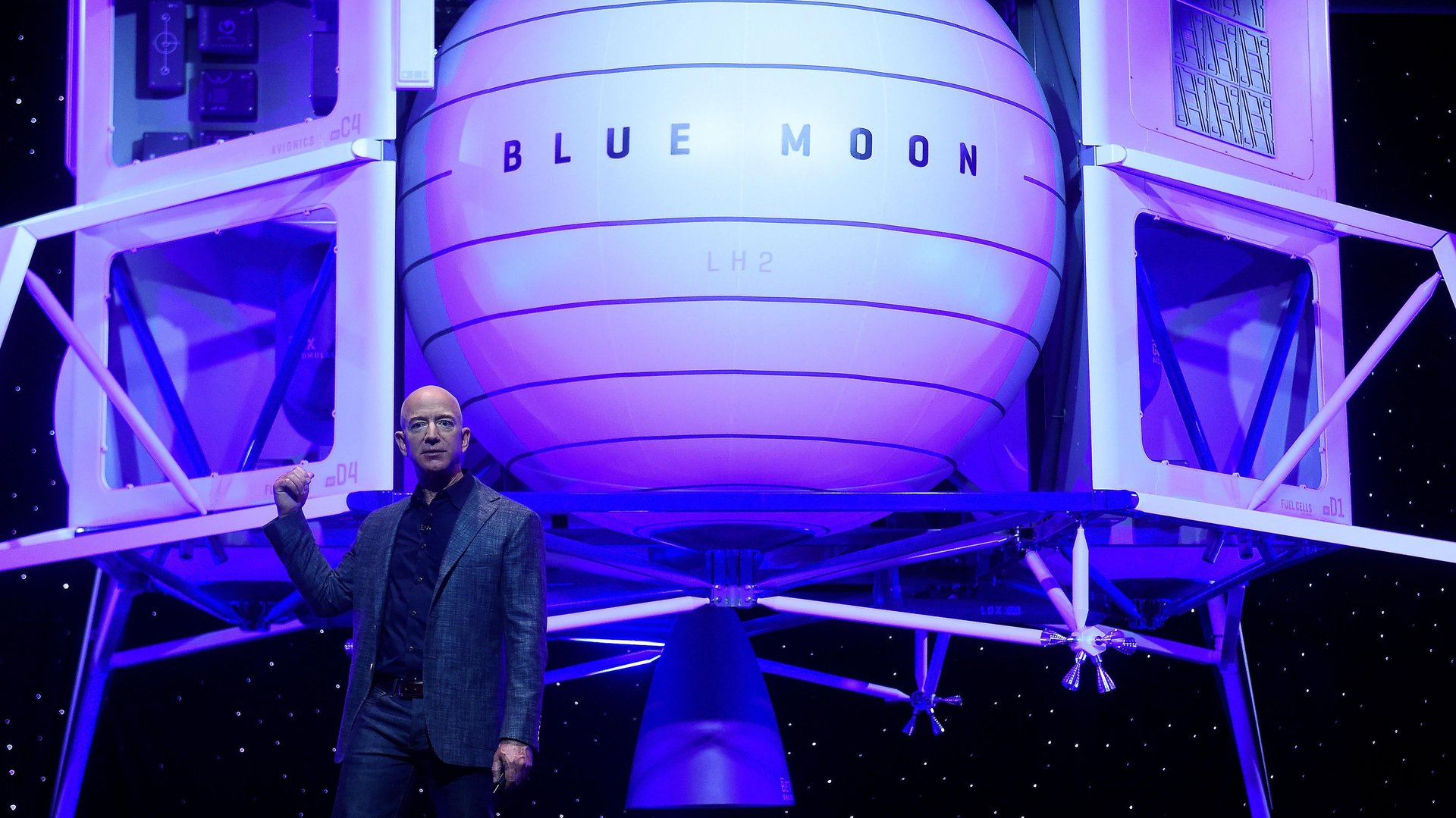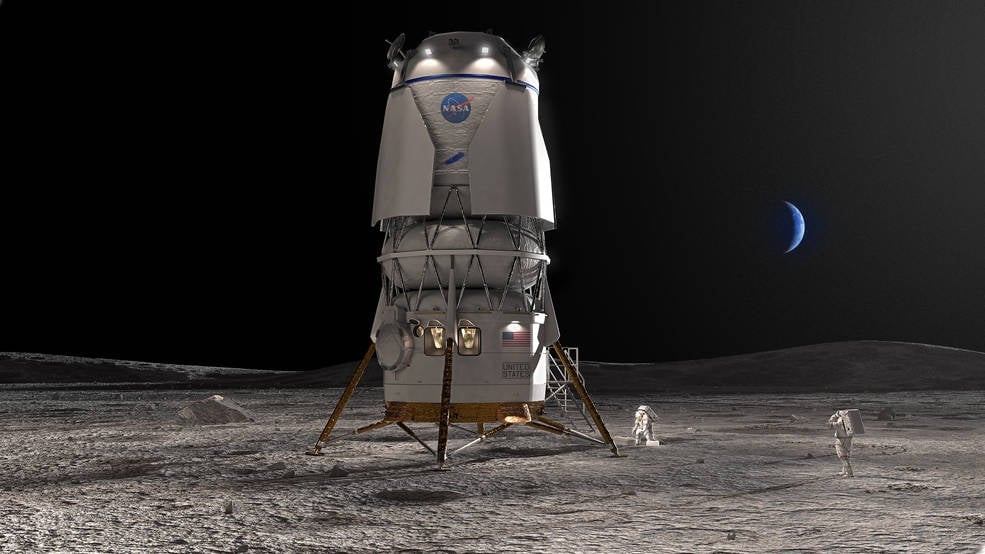Jeff Bezos and Elon Musk are now competing on the Moon
NASA picked Blue Origin to build a second human landing system for the Moon.

NASA chose a team led by Jeff Bezos’s space company Blue Origin to build a vehicle that will safely transport astronauts to the surface of the Moon and back again.
Suggested Reading
A lander has been the biggest missing piece within NASA’s plan to return to the Moon with the Artemis program. The agency needs a vehicle to safely transport astronauts from its Orion space capsule down to the surface of the Moon and back up again.
NASA has already tapped Elon Musk’s SpaceX to use its Starship spacecraft to do the job for the Artemis III Moon landing, which might take place in 2026, and the subsequent Artemis IV mission. But NASA wants at least two different landers, for redundancy and because the agency hopes to visit the Moon annually, with astronauts remaining on the surface for as long as 30 days.
“Today’s announcement is about maintaining that cadence and maintaining our excellence as the world’s top space program,” NASA administrator Bill Nelson said. The Blue Origin lander would be used for an Artemis V mission, which could take place in 2029.
The contract is worth $3.5 billion. SpaceX has been awarded contracts worth $4.2 billion for its Starship lander, but that price includes a second landing. John Couluris, the Blue Origin executive leading its lander program, said his company would be investing to cover 50% of the cost to build the vehicle.
Blue Origin’s “national team” will build a human landing system

Blue Origin has been working on its lunar lander since at least 2019, when it unveiled a mock-up at an event in Washington, D.C. However, it lost out to SpaceX in its bid for NASA’s first lunar lander contract in 2021 after NASA chose one company instead of two due to funding issues. Blue Origin filed legal protests against the bid but did not win. Despite concerns from some lawmakers about a “Bezos bailout,” NASA received funding last year to choose a second lander proposal.
Blue Origin is leading a team that includes a mix of major contractors and smaller specialist firms: Lockheed Martin, Boeing, Draper Labs, Astrobotic, and Honeybee Robotics.
Unlike SpaceX’s Starship, an enormous spacecraft capable of orbital flight, Blue is developing what is effectively a super-sized version of a traditional lander, with infrastructure that includes large batteries and storage areas to enable new activity on the Moon. The 16-meter tall vehicle weighs 45 metric tons when fully fueled, and is designed to be reusable. Blue Origin plans for it to remain in lunar orbit between landings, and be refueled by a tender spacecraft that will bring fuel and other resources from Earth.
The company expects to make several uncrewed test landings on the Moon ahead of an astronaut mission, launching onboard Blue Origin’s yet-to-fly New Glenn rocket, which may make its maiden voyage this year.
NASA’s Artemis program is well underway after the successful Artemis I mission in 2022, which sent an uncrewed Orion spacecraft around the Moon to test its ability to transport astronauts in the future. The next mission, Artemis II, aims to repeat the feat with a crew on board in late 2024, teeing up an actual landing in 2026.
However, concerns about rising costs of Artemis, potential delays to the Starship program, and the likelihood of budget cuts could alter this schedule.